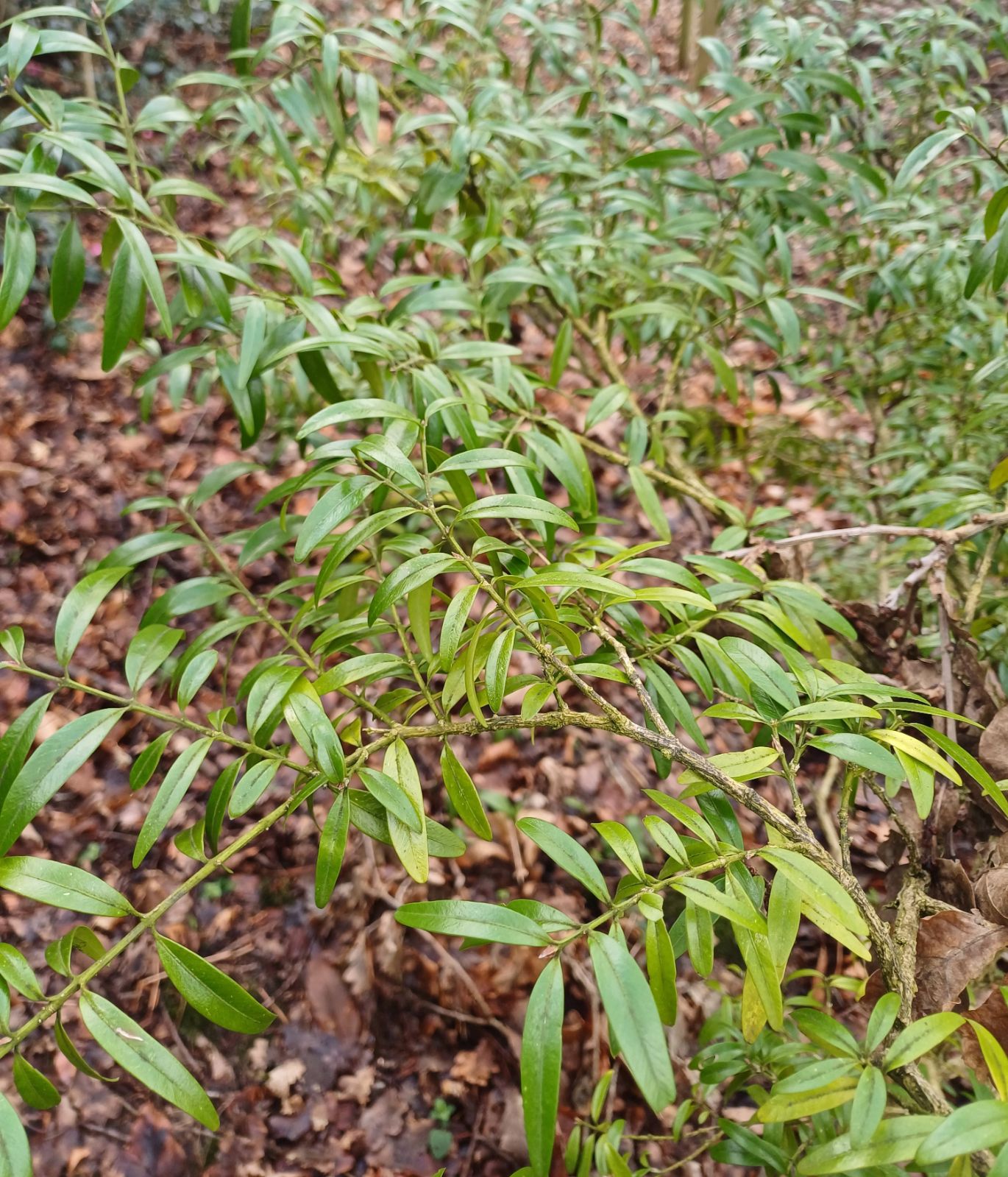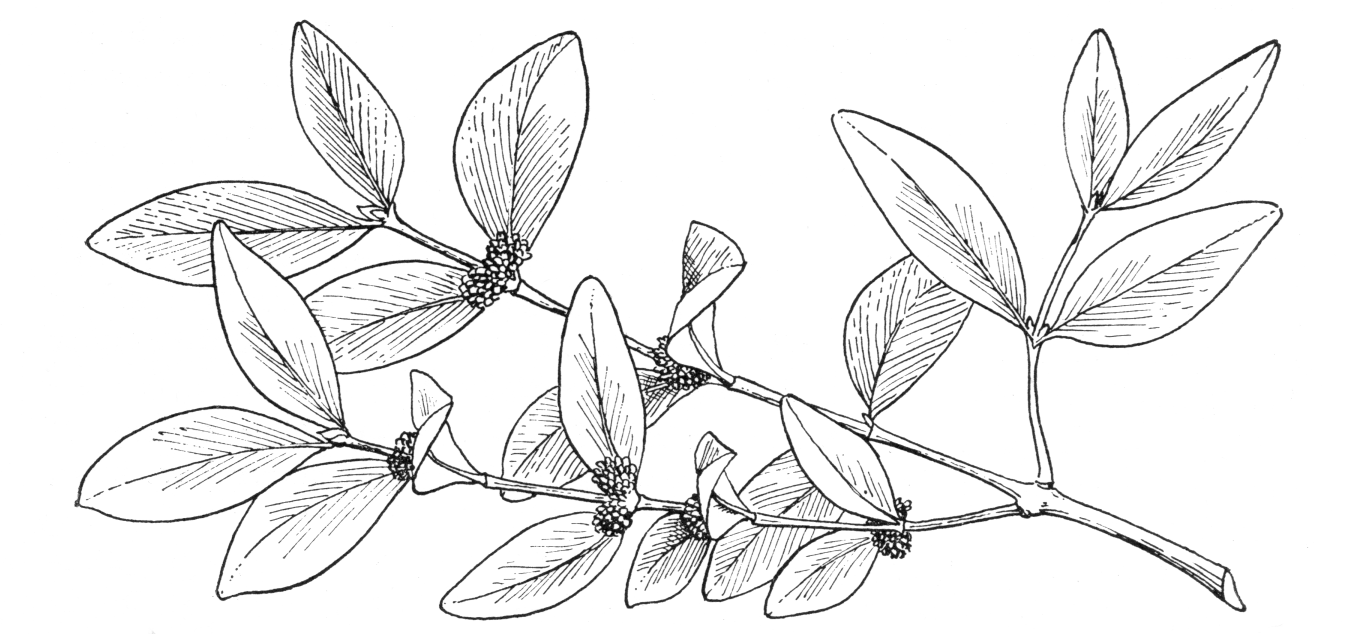Buxus wallichiana
Credits
Article from Bean's Trees and Shrubs Hardy in the British Isles
Recommended citation
'Buxus wallichiana' from the website Trees and Shrubs Online (treesandshrubsonline.
Genus
Common Names
- Himalayan Box
A shrub growing not more than 6 or 8 ft high in cultivation, but no doubt considerably taller in its native country; shoots very downy. Leaves 1 to 21⁄2 in. long, 1⁄4 to 5⁄8 in. wide; linear-lanceolate, tapered at both ends, dark green, not so glossy as B. sempervirens\ the base of the leaf, the midrib, and the short stalk are all downy. Flowers in dense axillary clusters, opening in April, and only noticeable for the yellow anthers of the males.
Native of the north-western Himalaya; very rare in cultivation. Although it grows slowly it is perfectly hardy. A bush at Kew (which no longer exists) reached a height and spread of about 6 ft in fifty years or more. There is an example of about 8 ft high in the Edinburgh Botanic Garden. It is difficult to propagate by cuttings. This species is readily distinguished from B. sempervirens and B. balearica by the long, narrow leaves, blunt or pointed but not notched at the apex, and by the much more abundant down on the stems, which persists for more than a year. The timber is equal to, or greater in value than, that of the common box.


